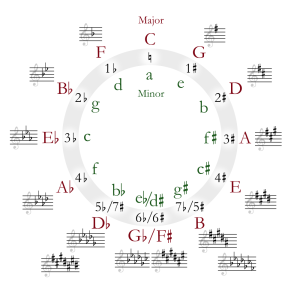Since beginning adult piano lessons a decade ago, I have tried to ignore my left hand. Fixated on the treble clef and my right hand, I viewed the bass clef as a nuisance, a mere accompaniment to the more seductive melody. The neophyte pianist that I was, I couldn’t help but succumb to a top line filled with spirited runs, rippling arpeggios, and the plaintive lingering of a whole note.
But two years ago I began studying music theory, and have since reversed that uninformed opinion, with a newfound appreciation for the bass clef and for my left hand. Under the patient guidance of my theory teacher, Stanley Dorn, I have begun to learn about harmonic structure. Somewhere in the last few months, my obstinate brain has started to realize that harmonic structure is really a composition’s foundation; the bricks on which the music is built.
In other words, the melody—that decorative, beautiful, and alluring component of music—is an expansion and expression of harmonic structure.
In theory class, we have been working with figured bass exercises and music analysis to help learn about harmonic chord progressions. Recently, in one of our classes, Stanley brought to mind a composition I had learned last year. “Understanding chord progressions will help us understand the structure of a composition, particularly with a composer like Chopin, where the music is not always in a stable chord position.” he said. “Remember that Mazurka in A minor? It wasn’t until the fourth line in the music that we finally arrived at a stable sound—a root position tonic chord—in this case, an A minor chord.”
Understanding this, I have re-examined that Mazurka. I was frustrated while learning the piece last year. I was unable to make sense of those first four lines, and found myself quite anxious while performing. Truthfully, I had no idea what was happening in the music. As soon as that A minor chord arrived on the fourth line, I could feel my body naturally relaxing; I didn’t know it then, but I was relaxing because the music was in a comfortable place. I had arrived at a root position chord, the most stable of all. Had I understood this a year ago, I might have performed those first four lines with an intentional feeling of being lost, a kind of nervous longing and searching. Maybe that’s the tension Chopin had intended, thereby making that A minor chord much more significant.
So I have now returned to that Mazurka with a new understanding and am learning it all over again. This time, I am giving my left hand as much credence as my right, playing with much more musical awareness, and hopefully, expression.





0 Comments